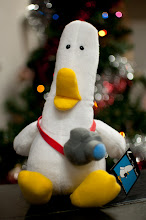So one of the most common things I do at the studio is correcting photographers camera settings. Most photographers don't understand why there pictures are coming out too dark or too light.
Photographers can always correct their work in post but that doesn't help them become better photographers. So here is the basics for those of you willing to take the time to heed my words of wisdom.
Your aperture is what regulates the amount of light that is let into the camera and also will effect the amount of bokeh (fun amazing blurriness). The higher the aperture the less light that is let in and also the sharper the picture. The smaller the aperture means more light and a little bit lighter on the focus.
The shutter of course is what opens and shuts and let's light in. The faster the shutter the less light that gets in and the slower the light the more light it let's in.
The ISO dictates the sensitivity the camera will have while shooting. The ISO will also get grainier the higher it goes. 100 is good for any light setups or outdoors and 400 for cloudy and 800 for dusk or indoors. 1600 will do wonders for indoors, but there is a price to pay for such magical low light photography. Then higher the iso the more grainy your pictures will come out. The more sensitive your camera is the better it will handle a higher ISO vs. grain.
There's a few things out there that will help you in the fight against grainy pictures. A full frame sensor on a DSLR will mean it's much kinder to you. Post processing in lightroom and photoshop will also help to reduce noise and levy the quality. When it comes to quality through you want to keep your iso as low as you can. Nikon has a setting of 50 for iso for some of it's cameras. I believe that Canon has ISO 100 as one of its lowest settings. The ISO will basically compensate for any blunders in exposure and act almost as a safety net for your low light shots. I commonly turn up my ISO when shooting weddings because of restrictions on flashes.
So once you've absorbed the above info you may continue on.
Now here's what i do when I help people with their camera settings. By looking at a picture you should be able to tell why a picture is blown out or under exposed by looking at the settings and also what conditions you were taking the picture in.
The combination of Shutter speed, Aperture and ISO will dictate how proper the exposure is. I expect to receive a good deal of criticism on this subject, here's how I operate though.
I keep my Nikon on ISO 50 all the time, if I have to shoot indoors I switch on auto ISO. I have my auto ISO range from 400 to 1600. Most times if I have to shoot indoors I'm using a flash or have adequate lighting somehow. When using Auto ISO you can expect mid ranges in your ISO such as 320 or 460. If you're shooting a wedding then you're going to want to adjust your range from 200 to 800, but for most events such as a family party or small event it's not going to matter. I always look at who I'm catering to when adjusting my ISO, if its a model I keep it low; if it's an event I usually don't worry to much and enjoy a higher ISO
So that's my two cents on the issue of Aperture, Shutter Speed and ISO
Subscribe to:
Post Comments (Atom)


No comments:
Post a Comment